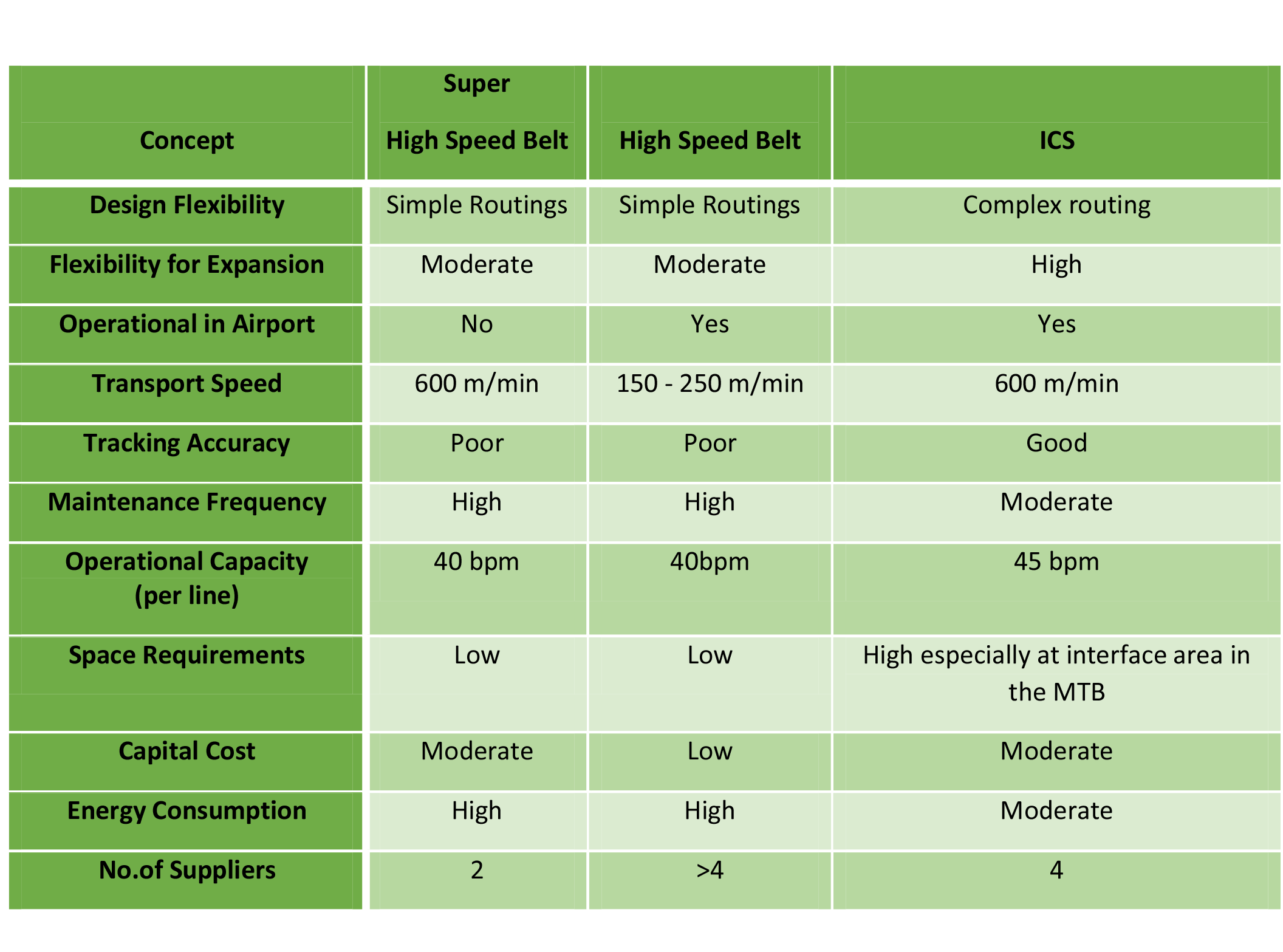
-Sufficient BHS capacity as defined in the UCD to
support the Airport passenger traffic of 60 MAP
-Cost effective to implement
-Operationally and energy efficient to meet
AOT’s baggage KPIs and service standards
-Resilient, including redundancy to be in line with
IATA standards and International best practices
-Utilise proven state-of-the-art technologies to
minimize risk to the airport

-Space in existing MTB baggage handling area
-Modifying BHS in existing MTB under operational conditions
-Budget for BHS
-60 minute MCT
-Interface to existing IT systems (AODB, CUTE, FIDS, etc.)

-Outbound Bags from MTB to SAT-1
-Transported using BHS transport system in tunnel
-Arrival Bags from SAT-1 to MTB
-Transported using tug & dolly
-To consider alternate transport methods using BHS
-Inter-Terminal Transfer Bags
-4 Concepts
-Via BHS equipment in tunnel, or
-Using tug & dolly by apron roads

between MTB and SAT-1
Technology 1
-Super High Speed Conveyor at 600 m/min
-Key Concern: Currently not installed in any airport
-Technology 2
-High Speed Conveyor at 150-250 m/min
-Key Concern: Speed is slower
-Example: Kuala Lumpur, Cincinnatti, Pittsburgh, Madrid and Incheon for inbound bags
-Technology 3
-Individual Carrier System (ICS, High Speed Tray) at 600 m/min
-Key Concern:
-Space in existing MTB for existing BHS/ICS interface
-Cost
-Example: Beijing T3, Incheon, Singapore, Munich, Madrid, Heathrow T5, Schiphol, etc


For Concepts using High Speed Conveyor to transport bags between MTB and SAT-1
Concept 1
-Sortation at SAT-1: Tilt-tray or Cross Belt sorting system
-Capacity: 80 bpm per sorter
Concept 2
-Sortation at SAT-1: Belt sorting system
-Capacity: 30 bpm per sort conveyor line
-For Concepts using Individual Carrier System to transport bags between MTB and SAT-1
Concept 3
-Sortation at SAT-1: Individual Carrier System
-Capacity: 45 bpm per ICS line



